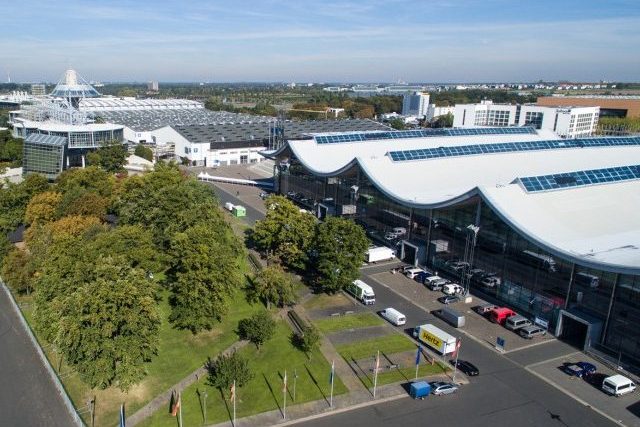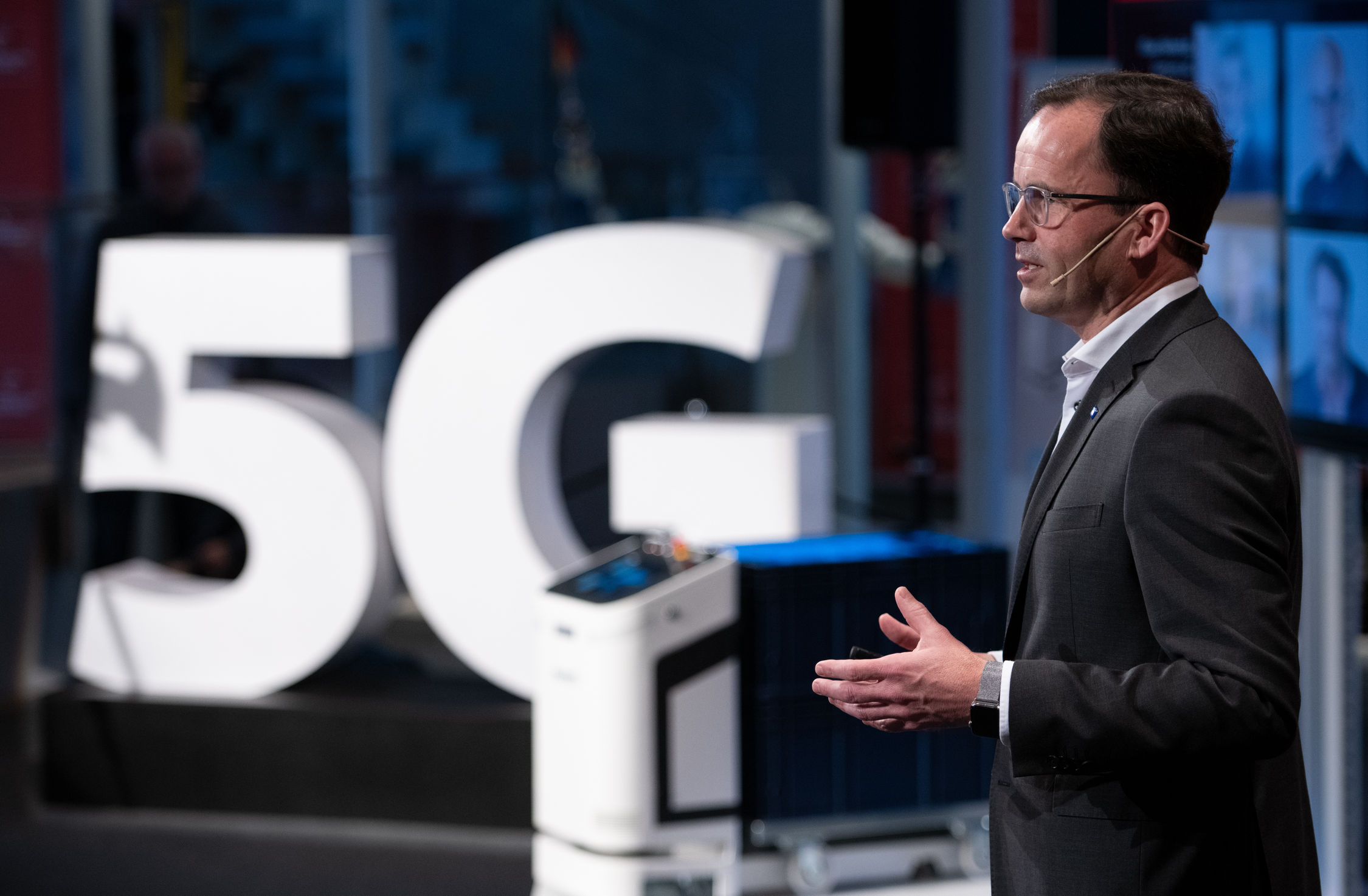Sponsors Article
Hannover Exhibition Center to become 5G test site by September
By the end of 2022, 1.4 million square meters of outdoor trade fair area and 30 buildings in Hannover will be equipped with 5G (Source: Deutsche Messe)
Deutsche Messe, Deutsche Telekom and Siemens will equip the exhibition grounds and halls with a hybrid 5G network. 5G applications will be possible both outdoors and indoor starting in September 2021. In addition to the trade fair operation, the rental of premises and infrastructure for test applications will become part of the future business model of the trade fair company.
Later this year, the Deutsche Messe exhibition centre will have its own 5G campus network, combined with a public 5G network from Deutsche Telekom. As part of the 5G Smart Venue strategy, the largest 5G trade fair in Europe will be created in Hanover, announced Jochen Köckler, CEO of Deutsche Messe. Gradually, indoor and outdoor areas will be equipped with the latest generation of mobile communications generation. Telekom will set up an outdoor coverage of 1.4 million square metres with its 5G public network. The provider is also responsible for the construction of the 5G campus network.
High bandwidth, low latency
For the campus network, Deutsche Messe has secured the full bandwidth of 100 MHz in the range of 3.7 GHz at the Federal Network Agency (BNetzA). Deutsche Telekom’s public network operates in the neighboring range of 3.6 GHz, so that a continuous frequency range with 190 MHz bandwidth is available for the hybrid network.
As a first step, Deutsche Telekom is equipping five halls with 5G. 70 indoor antennas are provided for this purpose. With additional 14 antennas the entire outdoor area including adjacent parking spaces is covered. The first expansion step is to be completed by September 2021, when the 5G network will go live at the exhibition grounds.
Telekom then supplies all 30 halls and buildings of the exhibition grounds. In the future, both trade fair visitors and trade fair exhibitors will be able to use the fast data radio. Private and public networks can be used in parallel as a “dual slice” network. The concept provides for a redundante network to ensure a high availability of 99.99 percent. A special focus is also placed on IT security. In addition, the trade fair installs an edge computing platform to process the data generated in the shortest possible response time.
Siemens uses trade fair as showroom
In addition to the installations of the trade fair and Deutsche Telekom, Siemens will also participate in the 5G networking of the exhibition grounds in Hanover. One hall will be equipped exclusivly with technology from the Nuremberg-based manufacturer in order to provide its own campus network. This network can also be used for testing and field trials during ongoing trade fairs by exhibitors and outside trade fair times by companies.
Köckler pointed out that Siemens technology will remain permanently in the exhibition hall and will be left to Deutsche Messe for commercial use. Other customers could also use Siemens technology for their products as a test environment and adapt them specifically to their performance, reliability and security requirements. Cedrik Neike, CEO Digital Industries at Siemens, cited industrial applications such as mobile robots in manufacturing, autonomous guided vehicles (AGV) in logistics or augmented reality applications for service technicians as possible test cases.
Siemens has already gained initial experience from a private industrial 5G network in its automotive test center in Nuremberg. Furthermore, 5G campus networks are currently being built at production sites in Amberg and Karlsruhe. The findings gained here will again be used in the equipment of the exhibition hall in Hanover.
Driving the digitalization of the trade fair
The trade fair boss explained to the press that the 5G strategy also takes account of the changes in trade fair operations. For example, he pointed out, 5G will make it possible to show more live circuits on the exhibition stands on applications in industry and logistics, so that trade fair visitors get a better impression of the concrete use of the presented solutions. Conversely, he said, it will be easier to host digital and hybrid events, broadcasting with high bandwidth from the exhibition center.
“With the allocation of a private 5G license by the Federal Network Agency and Deutsche Telekom as a partner, we are strengthening our core and new business. In this way, we offer exhibitors and guest organisers of all trade fairs in Hanover the opportunity to present their 5G-enabled products, solutions and applications live to an international audience.”
Dr. Jochen Köckler, Chairman of the Board of Management, Deutsche Messe AG
From trade fair operator to technology network operator
Trade fair and providers see the installation as an opportunity to bring 5G technology closer to economy. “With this high-speed 5G campus network, we are supplying a glass operating room for industry here in Hanover,” says Tim Höttges, CEO of Deutsche Telekom. This also has an impact on the business operations of the trade fair company. With the further development of the exhibition grounds into a multifunctional innovation campus, it is transforming itself from a pure organiser to the operator of a site for testing and demonstration purposes in highly technological environments, emphasized Jochen Köckler. With this model, the exhibition grounds could be used in the future – at least in theory – 365 days a year.
Production and mobility, like applications for smart cities, logistics or medical technology, could benefit from 5G technology, said Hagen Rickmann, Managing Director of Business Customers at Telekom Deutschland. At the Hanover Exhibition Centre, the advantages of future technology would now be touchable and thus tangible for visitors and customers.
However, he also pointed to challenges that had to be solved in the context of this major project. For example, it is necessary to ensure “clean transitions” when switching from indoor to outdoor networks in order to achieve the desired high reliability. In addition, the halls are extremely different in signal attenuation and reflection. Accordingly, the effort required to develop the optimal illumination is very high.
Investment in the future
The head of the trade fair estimated the expansion costs until the end of 2022 at around 11 million euros. The state of Lower Saxony contributes 25 percent of this, about 2.8 million euros, from a 50 million euro digitization pot, which also promotes 5G supply in the country as well as the expansion of the cable infrastructure to gigabit speed.
Minister of Economics and Digitalization Bernd Althusmann pointed out that Corona will change the trade fair business, as well as other business sectors, in a sustainable way. He confirmed to Deutsche Messe that the 5G Smart Venue strategy is a consistent way to orientate itself towards the future. Lower Saxony now has the opportunity to help shape the structural change and the associated accelerated digitalization. “We need to become a 5G country!” he said.


